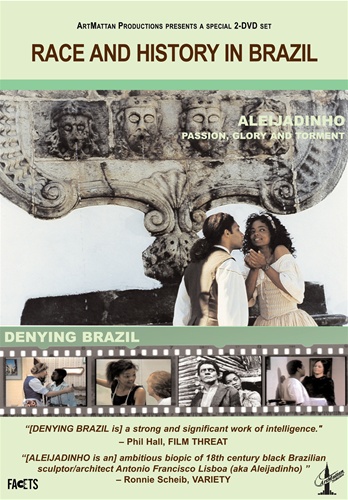Triangular Mirrors and Moving ColonialismsPosted in Articles, Brazil, Caribbean/Latin America, Media Archive, Politics/Public Policy on 2012-05-12 02:26Z by Steven |
Triangular Mirrors and Moving Colonialisms
Etnográfica
Volume 6, Number 1 (2002)
pages 127-140
Anani Dzidzienyo, Associate Professor of Africana Studies and Portuguese & Brazilian Studies
Brown University
Though there does not exist an undifferentiated colonialism category because of specificities relating to historical time conjunctions, the interfacing of such conjunctions with metropolitan projects, and the modalities of contesting colonial hegemonies and transformations in the structural/institutional relations between (ex)colonial and (ex)colonised, there is, however, the exigency for an ongoing contemplation and analysis of the reflections and refractions in the mirrors of empire and colonialism. By focussing on contradictions that characterize present-day relations between African countries and Brazil, there is the possibility for unraveling inter/intra colonial/ racial contradictions and how they impact on structures of power. Brazil, because of the widely recognized and increasingly proclaimed “africaness” becomes a mirror that simultaneously reflects and refracts multiple images of colonialism, race and empire.
Why is Brazil in this discussion, especially in view of the fact that my concerns pertain to colonialism and decolonization in Africa in the post-World War II period? Is there an implicit suggestion that there is a colonial tinge about Brazil’s African relations? Could it actually be the case that specific Brazilian articulations have veered in the direction of “colonialist” practices/perceptions? What, after all, constitutes colonialism?
For the purposes of this discussion I do not propose to offer (an)other definition for colonialism, nor do I propose to use “postcolonialism” as an analytical or descriptive concept save to note, following McClintock, that the term postcolonial suggests or imposes a certain linearity, a centering of colonialism (Euro) as the actual starting point of the life and development of societies and political economies of those areas that became entangled with or ensnared into European expansion overseas, and the creation of “colonial” models of life and governance in these sites. Postcoloniality suggests a terminal point in a process whereas, in fact, the consequences of colonialism spawned in conjunction with or opposition to specific local patterns of behavior do not simply melt away. Postcolonial sounds less confrontational than neo-colonial and appears to privilege cultural and literary constructions, highlighting formalistic processes of decolonization (flag, national anthem, heads of station). Further, it does not interrogate the continuity of the political culture and political economy constructed and left as a legacy by colonialism (see McClintock 1995).
Focussing on Brazilian-African relations offers the distinct advantage of (re)visiting Brazil’s own efforts at carving out a niche for the country, drawing upon specific historical, cultural, economic and political assests presented as a demonstration of the possibilities of South-South relations rendered even more manifest because of Brazil’s bona fides as an ex-colony – one inextricably linked to “Africa” and African polities seeking new modalities of change and development in the “post-independence” or decolonized new age…
…It is at this point that local, national and international images and perspectives jostle one another for attention in our (re)considerations of empire and end of empire. These discussions then cannot be demarcated by any specific ending of the empire because of the co-existence of past mirrors. Not that all of Africa is directly engaged with Brazil to the same extent or with equal intensity. In the following pages, an effort is made to analyze the multiple dimensions of Brazil-Africa relations without necessarily privileging the Portuguese connection but without loosing sight of its fundamentality for both Brazil and Africa. The role of race, specifically how race manifests itself in international relations – with specific reference to the representations of African-American concerns – provides a mirror for Brazil-Africa relations. Hence the attention paid to USA/Afro USA in this essay…
Read the entire article here.
